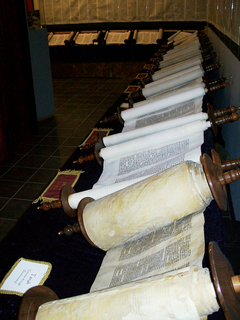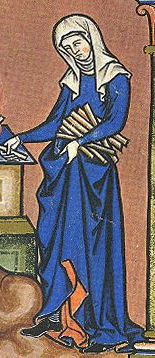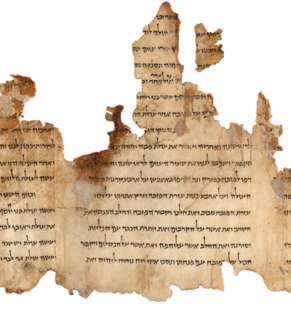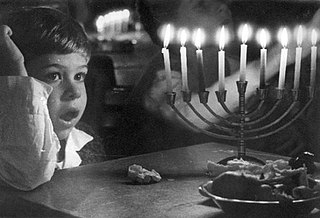
The Hebrew Bible, also called the Tanakh or Mikra, is the canonical collection of Jewish texts, which is also the textual source for the Christian Old Testament. These texts are composed mainly in Biblical Hebrew, with some passages in Biblical Aramaic. The form of this text that is authoritative for Rabbinic Judaism is known as the Masoretic Text (MT), and is divided into 24 books, while the Protestant Bible translations divide the same material into 39 books.

Samson was the last of the judges of the ancient Israelites mentioned in the Book of Judges in the Hebrew Bible and one of the last of the leaders who "judged" Israel before the institution of the monarchy. He is sometimes considered to be an Israelite version of the popular Near Eastern folk hero also embodied by the Sumerian Enkidu and the Greek Heracles.

Boaz is a biblical figure appearing in the Book of Ruth in the Hebrew Bible and in the genealogies of Jesus in the New Testament and also the name of a pillar in the portico of the historic Temple in Jerusalem. The word is found 24 times in the Scriptures, two being in Greek.

Miriam is described in the Hebrew Bible as the daughter of Amram and Jochebed, and the sister of Moses and Aaron. She was a prophetess and first appears in the Book of Exodus.

Incest in the Bible refers to sexual relations between certain close kinship relationships which are prohibited by the Hebrew Bible. These prohibitions are found predominantly in Leviticus 18:8-18 and 20:11-21, but also in Deuteronomy. The biblical categories of prohibited relationships does not entirely match the modern definitions of prohibited incestuous relations in force in various countries or of the various Christian denominations.

Leah is described in the Hebrew Bible as the daughter of Laban. She and her younger sister Rachel became the two concurrent wives of Hebrew patriarch Jacob. She had six sons, whose descendants became some of the Twelve Tribes of Israel. She also had a daughter, Dinah.

Delilah is a woman mentioned in the sixteenth chapter of the Book of Judges in the Hebrew Bible. She is loved by Samson, a Nazirite who possesses great strength and serves as the final Judge of Israel. Delilah is bribed by the lords of the Philistines to discover the source of his strength. After three failed attempts at doing so, she finally goads Samson into telling her that his vigor is derived from his hair. As he sleeps, Delilah orders a servant to cut Samson's hair, thereby enabling her to turn him over to the Philistines.

Ibzan appears in the Hebrew Bible as the tenth of the Judges of Israel. Very little is said about him, except the following:

In the Book of Genesis, Dinah was the daughter of Jacob, one of the patriarchs of the Israelites, and Leah, his first wife. The episode of her violation by Shechem, son of a Canaanite or Hivite prince, and the subsequent vengeance of her brothers Simeon and Levi, commonly referred to as the rape of Dinah, is told in Genesis 34.

Masei, Mas'ei, or Masse is the 43rd weekly Torah portion in the annual Jewish cycle of Torah reading and the 10th and last in the Book of Numbers. The parashah constitutes Numbers 33:1–36:13. The parashah discusses the stations of the Israelites' journeys, instructions for taking the land of Israel, cities for the Levites and refuge, and the daughters of Zelophehad.
Judah bar Ilai, also known as Yehuda bar Ma'arava and Rabbi Judah, was a rabbi of the 2nd century. Of the many Judahs in the Talmud, he is the one referred to simply as "Rabbi Judah" and is the most frequently mentioned sage in the Mishnah.

The women in the Bible are rarely mentioned by name, with named women representing only 5.5 to 8 percent of the total of all named characters, male and female. This suggests that women were not usually in the forefront of public life. Those women that are named, rose to prominence for reasons outside the ordinary. They are often an aspect of the over-turning of man-made power structures commonly found in a biblical literary device called a "reversal." Abigail and Esther, Jael who drove a tent peg into the enemy commander's temple while he slept, are a few examples of women who turned the tables on men with power. The founding matriarchs are mentioned by name, as are some prophetesses, judges, heroines, and Queens, while the common woman is largely, though not completely, unseen. The slave Hagar's story is told, and the prostitute Rahab's story is also told, along with a few others like them.
Rabbi Yochanan ben Nuri was a tanna of the 1st and 2nd centuries.
Puah is a name given to two persons in the Bible:
Allusions in rabbinic literature to the Biblical character Samson, the ancient Israelite hero who fought the Philistines with supernatural strength, contain various expansions, elaborations and inferences beyond what is presented in the text of the Bible itself.
The origins of Judaism lie in the Bronze Age amidst polytheistic ancient Semitic religions, specifically Canaanite religion, co-existing with a syncretization with elements of Babylonian religion and of the worship of Yahweh reflected in the early prophetic books of the Hebrew Bible. During the Iron Age I, the Israelite religion became distinct from other Canaanite religions due to the unique monolatristic (proto-monotheistic) worship of Yahweh.
Nitzevet (Nzb'th) was an Israelite woman who was the mother of David according to the Talmud, but she is not named in the Bible. She was an ancestor of the Kings of Judah.


















